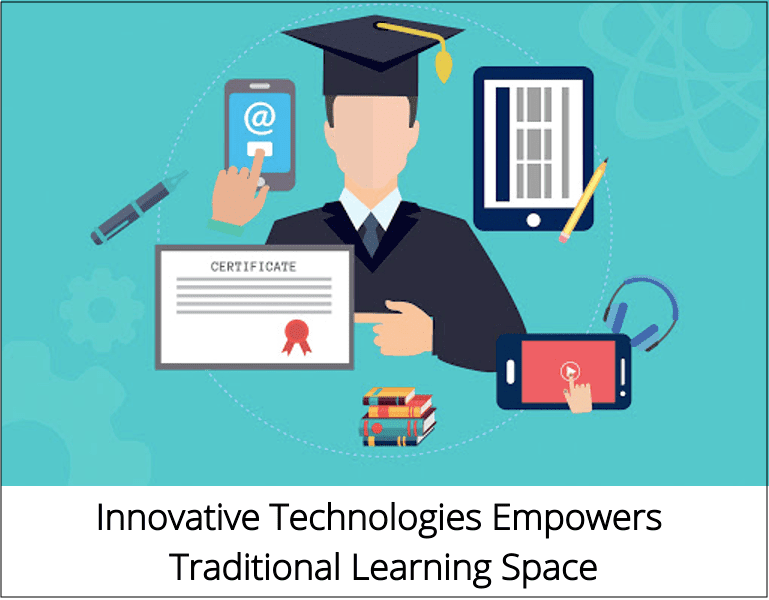Technology is shaping the way we teach and learn. This transformation is taking place worldwide, with technology allowing educators to impart knowledge and creativity more effectively. Virtual reality technology allows students to experience subjects in a new way, while adaptive learning focuses on tailoring educational materials to the individual needs of students. Artificial intelligence helps educators better understand the needs of their students, while gamification increases motivation and participation. Mobile learning, cloud computing, social media, and online assessment are all allowing for new methods of teaching and evaluating students. Augmented reality and online courses provide students with a unique learning experience. Overall, technology has the potential to improve learning outcomes and change the world of education.
10 Innovative Ways Technology is Transforming Education
The world is changing, and so is the way we approach education. Technology is transforming the way we teach and learn. This transformation is happening not only in developed countries but also in developing countries. Technology is enabling innovative ways to impart knowledge and creativity to students. Below are the top 10 innovative ways technology is transforming education.
1. Virtual Reality
Virtual reality technology allows students to experience subjects they are studying in a completely new way. This technology creates a simulated environment that’s so close to the real world that it feels like the student is experiencing it firsthand. History, science, and even literature come to life in a way that would be impossible to achieve with traditional methods of teaching.
2. Adaptive Learning
Adaptive learning technology has the ability to tailor educational materials to the specific needs of each individual student. With adaptive learning, students can go at their own pace and have their own unique learning experience based on their strengths and weaknesses. This technology ensures that students are not left behind and that they get proper guidance in areas where they struggle.
3. Artificial Intelligence
Artificial Intelligence is a technology that can help educators better understand their students’ needs and provide customized educational programs. AI-powered systems can provide insights into student behavior and learning patterns, enabling teachers to develop appropriate teaching methods and improve learning outcomes.
4. Gamification
Gamification is the use of game elements in non-gaming settings, and it has found its way into the education sector. Gamification makes learning more exciting and engaging for students through the use of game mechanics like points, badges, competition, and leaderboards. Gamification has proven to be very effective in increasing student motivation and participation.
5. Mobile Learning
Mobile learning, also known as m-learning, is the use of mobile devices such as smartphones and tablets to access educational materials. Students can learn anytime, anywhere, and at their own pace through mobile learning. Mobile learning is particularly helpful for schools in developing countries where access to computers and reliable internet connections are a challenge.
6. Cloud Computing
Cloud computing is transforming education by giving students access to learning materials anywhere, anytime. Students can collaborate on assignments and projects with each other and with their teachers from remote areas. With cloud computing, educators can share learning materials and resources on a global scale.
7. Social Media
Social media has become an integral part of modern life, and education is no exception. Social media allows students to connect with their peers, collaborate on projects, and share knowledge. The use of social media in education is also beneficial for educators since it provides them with instant feedback on their teaching methods.
8. Online Assessment
Online assessment is revolutionizing the way students are evaluated. With online assessments, students can get real-time feedback on their performance, and teachers can monitor students’ progress more effectively. Online assessment tools can also be customized to meet the needs of individual students.
9. Augmented Reality
Augmented reality is another form of technology that’s transforming education. Augmented reality technologies can overlay digital images onto the real world in real-time. This technology can be used to provide virtual tours of historical places, simulate scientific experiments or bring to life characters in a story.
10. Online Courses
Online courses are becoming more popular as technology makes it easier to access educational materials. Students can now take courses from top universities and institutions without leaving their homes. Online courses are particularly helpful for working professionals who want to further their education without disrupting their work schedule.
In conclusion, technology has brought a lot of innovation and efficiencies to the education sector. The 10 innovative ways above show how technology has the potential to increase student engagement, improve learning outcomes and change the way education is delivered globally.
